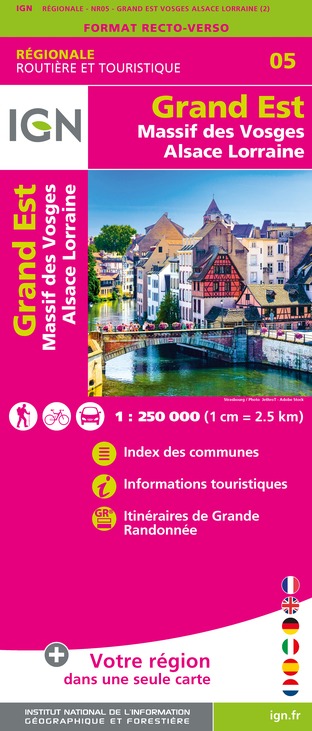警报
警报
练习类型
徒步
非常容易
1h
Presentation
地图
兴趣点
Cirkwi 简报
评级和评论
周围的看点
波蒙漫步


信用 : CCBRC
Cirkwi 简报
徒步发现波松的历史魅力
踏上一段令人陶醉的旅程,穿越波松美丽的风景和丰富的历史。这个安理河谷中心的宁静村庄,融合了乡村传统和历史意义的独特魅力。由Brie des Rivières et Châteaux市政社群提议,这次徒步之旅邀请旅客探索一个曾经葡萄园盛行现在农业强大的村庄。感受古老街道的宁静,对12世纪的教堂感到惊叹,被经历时间考验的雄伟城堡所迷住。每一步脚步都能感受到农村法国及其历史的精髓。
路线详情:数字与高差
这段行程总共距离2.9公里,海拔从93到114米不等,非常适合各个级别的爱好者。总上升与下降略有变化,标记为36到38米,呈现出一个平缓的坡度。由Brie des Rivières et Châteaux市政社群策划的路线没有标记,增加了一份冒险元素,但仍然非常直接,回到圣日尔曼教堂的起点。从技术上分析,这条路线是探索波松历史宝藏的一个理想选择。
季节性贴士和安全建议
无论什么季节,波松的美景都是四季常青的。然而,春天提供了丰富多彩的环境,非常适合摄影爱好者。夏季展现出乡村的全面壮丽,但需要注意保持水分。秋季以色彩斑斓的景色围绕着你,非常适合悠闲漫步,而冬季虽然温和,但仍需要适当的着装来应对寒冷的日子。无论何时,始终确保穿着舒适的鞋子并携带水,特别是在温暖的月份。事先了解路线以增强您的体验,并尊重私人财产,尤其是城堡周围的区域。
漫步波松的历史
波松是布列地区的一颗明珠,它不仅是一个村庄,更是一个活的博物馆,展示了乡村传统与重要历史事件的背景。在一战期间,盟军总部驻扎在此,法国元帅福赫的战略才智导致了盟军的胜利,这使波松成为了“胜利的摇篮”。这个拥有古老教堂和历史城堡的村庄,见证了法国乡村的韧性和演变。波松的建筑和历史层面提供了一个引人入胜的过去的一瞥,使徒步漫游过程更加丰富多彩。
区域天气和最佳参观时间
波松拥有温和的气候,冬季温和,夏季温暖。年降水相对均匀分布,使波松成为全年的目的地。然而,最佳参观时间是在晚春和初秋之间,此时天气最适合徒步。在这些月份,气温宜人,自然风景达到高峰,提供了无与伦比的徒步体验,穿越波松的历史和自然风光。
踏上一段令人陶醉的旅程,穿越波松美丽的风景和丰富的历史。这个安理河谷中心的宁静村庄,融合了乡村传统和历史意义的独特魅力。由Brie des Rivières et Châteaux市政社群提议,这次徒步之旅邀请旅客探索一个曾经葡萄园盛行现在农业强大的村庄。感受古老街道的宁静,对12世纪的教堂感到惊叹,被经历时间考验的雄伟城堡所迷住。每一步脚步都能感受到农村法国及其历史的精髓。
路线详情:数字与高差
这段行程总共距离2.9公里,海拔从93到114米不等,非常适合各个级别的爱好者。总上升与下降略有变化,标记为36到38米,呈现出一个平缓的坡度。由Brie des Rivières et Châteaux市政社群策划的路线没有标记,增加了一份冒险元素,但仍然非常直接,回到圣日尔曼教堂的起点。从技术上分析,这条路线是探索波松历史宝藏的一个理想选择。
季节性贴士和安全建议
无论什么季节,波松的美景都是四季常青的。然而,春天提供了丰富多彩的环境,非常适合摄影爱好者。夏季展现出乡村的全面壮丽,但需要注意保持水分。秋季以色彩斑斓的景色围绕着你,非常适合悠闲漫步,而冬季虽然温和,但仍需要适当的着装来应对寒冷的日子。无论何时,始终确保穿着舒适的鞋子并携带水,特别是在温暖的月份。事先了解路线以增强您的体验,并尊重私人财产,尤其是城堡周围的区域。
漫步波松的历史
波松是布列地区的一颗明珠,它不仅是一个村庄,更是一个活的博物馆,展示了乡村传统与重要历史事件的背景。在一战期间,盟军总部驻扎在此,法国元帅福赫的战略才智导致了盟军的胜利,这使波松成为了“胜利的摇篮”。这个拥有古老教堂和历史城堡的村庄,见证了法国乡村的韧性和演变。波松的建筑和历史层面提供了一个引人入胜的过去的一瞥,使徒步漫游过程更加丰富多彩。
区域天气和最佳参观时间
波松拥有温和的气候,冬季温和,夏季温暖。年降水相对均匀分布,使波松成为全年的目的地。然而,最佳参观时间是在晚春和初秋之间,此时天气最适合徒步。在这些月份,气温宜人,自然风景达到高峰,提供了无与伦比的徒步体验,穿越波松的历史和自然风光。
自动生成。
IGN 地图

2416SB - MELUN MORMANT
编辑器 : IGN
收藏 : TOP 25 ET SÉRIE BLEUE
梯子 : 1:25 000
13.90€

2516SB - NANGIS DONNEMARIE-DONTILLY
编辑器 : IGN
收藏 : TOP 25 ET SÉRIE BLEUE
梯子 : 1:25 000
13.90€

119 PARIS SENS PNR DU GÂTINAIS FRANÇAIS
编辑器 : IGN
收藏 : TOP 100
梯子 : 1:100 000
8.40€

190 PARIS CHANTILLY FONTAINEBLEAU
编辑器 : IGN
收藏 : TOP 100
梯子 : 1:100 000
8.40€

D75-95 ÎLE-DE-FRANCE OUEST
编辑器 : IGN
收藏 : CARTES DÉPARTEMENTALES IGN
梯子 : 1:150 000
5.90€

D77 SEINE-ET-MARNE
编辑器 : IGN
收藏 : CARTES DÉPARTEMENTALES IGN
梯子 : 1:150 000
5.90€

NR08 CENTRE-VAL DE LOIRE
编辑器 : IGN
收藏 : CARTES RÉGIONALES IGN
梯子 : 1:250 000
6.80€

NR05 GRAND EST RECTO/VERSO MASSIF DES VOSGES ALSACE LORRAINE
编辑器 : IGN
收藏 : CARTES RÉGIONALES IGN
梯子 : 1:250 000
6.80€

NR03 ÍLE DE FRANCE
编辑器 : IGN
收藏 : CARTES RÉGIONALES IGN
梯子 : 1:250 000
6.80€

NR04 - GRAND EST RECTO/VERSO ARDENNE CHAMPAGNE
编辑器 : IGN
收藏 : CARTES RÉGIONALES IGN
梯子 : 1:250 000
6.80€

EUROPE
编辑器 : IGN
收藏 : DÉCOUVERTE DES PAYS DU MONDE IGN
梯子 : 1:2 500 000
7.00€
技术信息
徒步
难度
非常容易
持续时间
1h
距离
3 km
练习类型
徒步
非常容易
1h
显示更多信息
高程剖面
起点
9
Place de l'église
,
77720
Bombon
Lat : 48.574463Lng : 2.858589
兴趣点
数据作者
评级和评论
周围的看点







